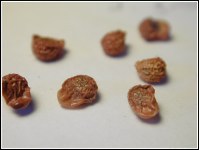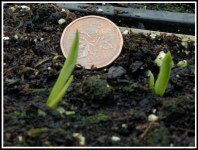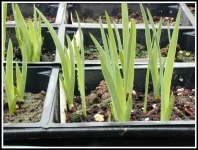Chapman Iris | home
Greetings | About Us | Upcoming Seedlings | Miniature Dwarf Bearded | Standard Dwarf Bearded | Intermediate Bearded | Miniature Tall Bearded | Border Bearded | Tall Bearded | Aril Bred | Beardless - Pseudacorus | Bearded - Species | Siberian | Spuria | Iris Notes | Planting Instructions | Iris Diseases | Hybridizing | Iris Terminology | Iris Awards | Special Events | Ordering Information
_______________________________________________
Hybridizing
To produce a new plant you must produce seed. This does occasionally occur naturally (bee pod) with Beardless Iris and occasionally with Dwarf Bearded Iris and rarely with tall Bearded Iris. Sometimes this can produce good offspring, but the best results are from planned crosses.
The first step is having a goal or plan. Then you have to choose good parents. A basic understanding of iris genetics helps. For this refer to the book "The World of Iris" available from the American Iris Society.
The pollen is located on the anthers, which are at the base of the style arms. The pollen from the male (pollen) parent is placed on the stigmatic tip of the female (pod) parent. The stigmatic tip is located about 2/3 the way up the style arm. Use fresh flowers for receiving the pollen. If the cross is successful a seed pod will form.
Harvest the seeds when the pod starts to dry out. Plant seeds in the fall. They need a period of cold before germinating. You can plant outside or in a pot. They need about 3 months of cold for good germination. A fridge can be a good substitute for mother nature.
Transplant to the garden when about 3-4" tall, about 10" apart.
It takes 2 or more years before the first bloom.
Good Luck!



